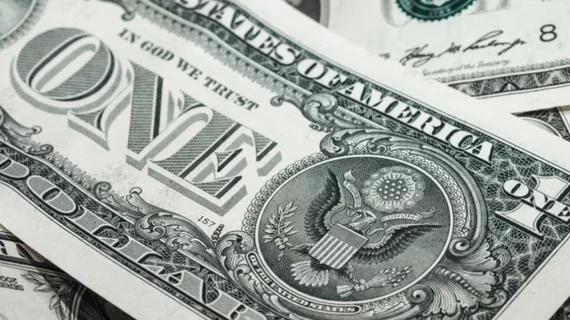Healthcare spending per person rose to an all-time high in 2017 for those covered by employer-sponsored insurance, according to the Health Care Cost Institute (HCCI). Average healthcare spending per individual rose 4.2 percent to $5,641, including medical and pharmacy claims.
2017 marked the second consecutive year where spending rose more than 4 percent, according to HCCI’s report. From 2013 to 2017, year-over-year spending growth averaged 3.9 percent, outpacing GDP, which grew at an annual rate of 3.1 percent over that time period.
While spending has continued to grow, the overall use of healthcare services has “changed very little,” according to the report. Healthcare utilization actually declined 0.2 percent from 2013 to 2017, though it did tick up 0.5 percent in 2017 from the previous year.
Utilization varied widely by age, and more than 40 percent of 19 to 25-year-olds had no claims for any healthcare services or prescription drugs in 2017. By comparison, 15.8 percent of those 55-64 had no utilization, the report found.
“What we do know is that utilization has changed very little, particularly for medical services,” Jeannie Fuglesten Biniek, PhD, one of the report authors and a senior researcher at HCCI, told HealthExec. “As we look to curb health care spending growth, the data does provide important context to inform those efforts regarding where and to whom health care services are being delivered.”
One of those areas is individuals with chronic conditions, who had much higher average spending. In 2017, average spending reached $8,921 for individuals with one of five chronic conditions, including hypertension, asthma, diabetes, attention deficit disorder/hyperactivity disorder and congestive heart failure. Those with two or more of these conditions had spending averaging $20,257, while those without one of the conditions had average spending of $3,603.
Utilization and spending across different healthcare services also varied, with professional services spending accelerating 13 percent between 2013 and 2017. Spending on administered drugs rose 45 percent over that time period, even though utilization dropped 12 percent.
Similarly, inpatient utilization dropped 5 percent, though inpatient spending grew 10 percent over the five-year period.
Prices were a big driver of spending, rising 3.6 percent in 2017. Out-of-pocket spending per person rose 2.6 percent in 2017, though the growth was slower than total spending. Prices for emergency room visits rose 24 percent, while usage rose 10 percent.
Spending, utilization and prices for inpatient care for mental health and substance use all increased, with substance use admissions rising 18 percent, coupled with a 39 percent increase in prices.
“The increases in use, price and spending in inpatient admission for mental health and substance use stood out,” Fuglesten Biniek told HealthExec. “Specifically, we saw a steady rise in substance use admissions, which increased 18 percent between 2013 and 2017 and drove spending for this sub-category along with a 39 percent rise in prices over the same period.”

